|
Only
About 13% of the Energy in Gasoline Gets to the Wheels to Power the
Car!
Where Does It All Go? |
| The Following Graphic is the
Approximate Distribution of the Energy in Gasoline as Used by a Car in
Typical Operation.
Once it gets to the wheels, how its distributed is up to the way the
car is being used. Typical use is shown. |
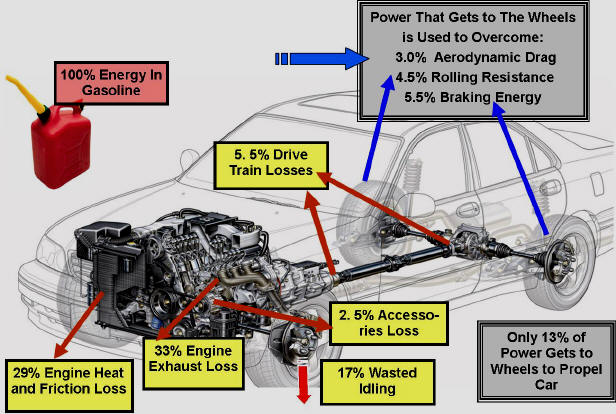 |
| This picture presents an average usage of
the energy in gasoline.
Aerodynamic drag can be a much higher percentage if you travel fast.
It becomes a much bigger factor at speeds above 50 MPH. Since drag is
proportional to the speed squared, 70 mph will create twice the drag as 50
mph! (702 / 502 = 1.96) |
|
What Can You Do To Improve
Efficiency? Some Thoughts:
|
|
|
|
Two Concepts shown below for Using Peltier
Effect Modules. At <~$50 for 100 watt modules these could be placed
along a section of exhaust pipe to recover some of the 33% of energy in
gasoline going to waste! |
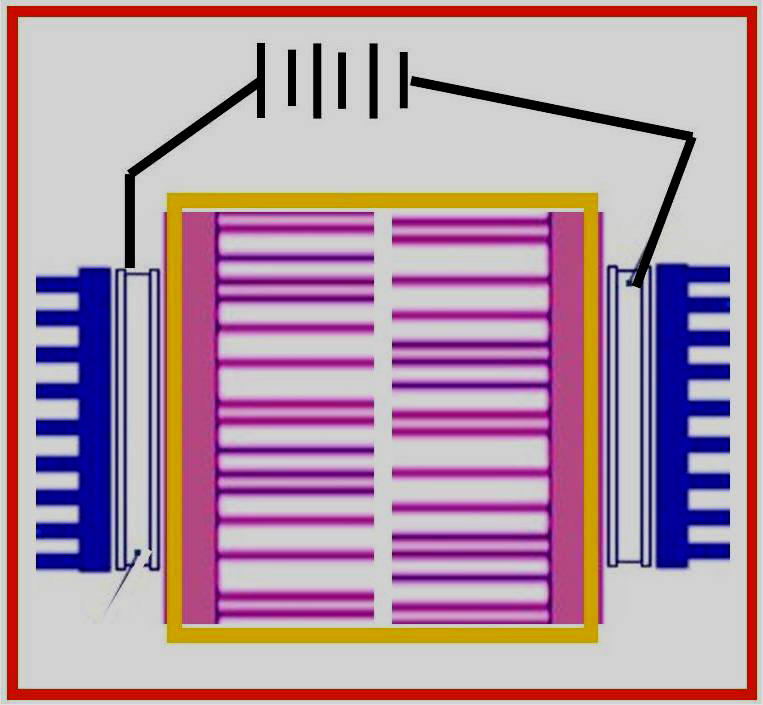
Two Peltier Modules placed in a square
section of exhaust pipe with heat extracting fins could provide power to
charge batteries. More could easily be added. |
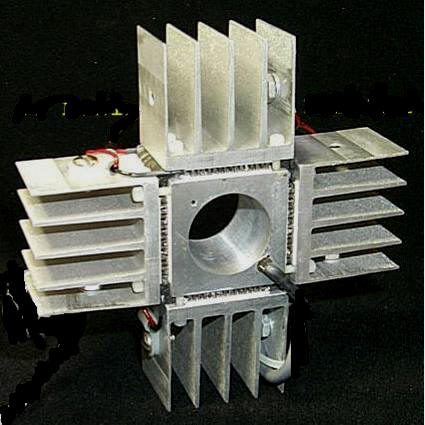
Multiples of "Four Peltier Modules"
placed around an aluminum exhaust sections could be placed in an
air-conditioning duct! |
|
Hot Rod Approach to Braking Energy Recovery
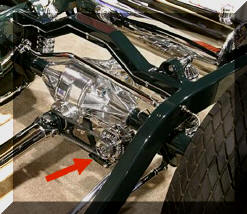 Braking creates 5.5% wasted energy
or about 42% of the energy that gets to the rear wheels!
Hybrids collect some of that energy. Braking creates 5.5% wasted energy
or about 42% of the energy that gets to the rear wheels!
Hybrids collect some of that energy.
I recall a photo many years ago on the cover of
one of the Rodding Magazines that showed a Tee Bucket with the
alternator mounted to the driveshaft at the rear end. This avoided
cluttering the engine compartment with accessories. The photo on the
left is similar to what was shown on that cover. The alternator is a
bit hard to see but the red arrow is pointing the chrome alternator pulley
and the belt can be seen going to another pulley mounted on the universal attached
to the pinion shaft.
How about
mounting a 250 amp Chevy Truck
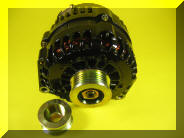 alternator
(photo left, $299 new) and connecting it to batteries through a HD power
relay only when the brake peddle is pressed. (Note: A welding power
supply contactor can handle that level of DC current and is reasonably
priced.) That's 3000 Peak
Watts or about 4 HP! That will slow down the car by charging a
few deep cycle batteries connected in parallel. Optima Yellow Tops
are designed for deep discharge and can handle high current charging.
The batteries could run
electric air-conditioning, radio, lights etc! Then when stopped,
the engine can be turned off and only started when ready to take off again. alternator
(photo left, $299 new) and connecting it to batteries through a HD power
relay only when the brake peddle is pressed. (Note: A welding power
supply contactor can handle that level of DC current and is reasonably
priced.) That's 3000 Peak
Watts or about 4 HP! That will slow down the car by charging a
few deep cycle batteries connected in parallel. Optima Yellow Tops
are designed for deep discharge and can handle high current charging.
The batteries could run
electric air-conditioning, radio, lights etc! Then when stopped,
the engine can be turned off and only started when ready to take off again.
(Note: Test drove a 2011 V8 Porsche
Cayenne that shut the engine off when stopped! Could not tell that it
restarted it was so smooth! It just uses a lead acid battery and heavy
duty starter. Assume they ran the air-conditioning taking advantage of
the cooled evaporator coils for a short time. Specs said this feature
will operate on all but very hot days and will start the engine if battery
power is low.) |
|
Formula 1 Uses KERS (Kinetic Energy
Recover Systems for 2009 (It was not used in 2010 but Ferrari announced it
will use it again in 2011. Ferrari wanted to use a system with more
power but that was turned down.)
The folks who ran KERS for 2009! Most teams employing KERS are
using generators charging batteries like the suggestion made above to
recover braking energy. F1 regulations are designed to allow the KERS
to deliver about 80 HP for 6 seconds each lap.
The systems weight about
75 pounds.
However Williams is using a
device that always intrigued me-a flywheel!
One system
uses a
flywheel spinning at up to 40,000 rpm to recapture kinetic energy.
Under braking, the rear wheels turn a motor/generator that spins up the
flywheel. The driver can press a "boost button" on the steering wheel the
flywheel releases its energy to drive the motor and provide an extra power
boost.
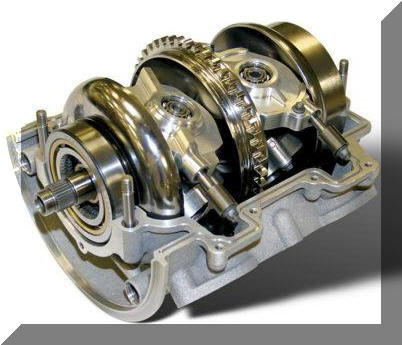 Companies
like Flybrids (www.flybridsystems.com) and Xtrac (www.xtrac.com) are working
with the F1 folks as well as developing commercial systems. Some
operate as "all mechanical system" using a Constant Velocity Transmission
(CVT) to spin-up the flywheel and then delivery mechanical energy back to the
wheels. Companies
like Flybrids (www.flybridsystems.com) and Xtrac (www.xtrac.com) are working
with the F1 folks as well as developing commercial systems. Some
operate as "all mechanical system" using a Constant Velocity Transmission
(CVT) to spin-up the flywheel and then delivery mechanical energy back to the
wheels.
Some systems use a flywheel
connected to the vehicle transmission to store energy under braking and
recovers it when the vehicle reaccelerates. A CVT controls speeds
proportionate to the torque transmitted through the device. This
system reportedly has half the mass of hybrid battery systems, and a more
rapid energy transfer. The flywheel is made of steel with a
filament-wound carbon fiber rim and rotates in an evacuated chamber at
speeds between 32,000 and 64,500 rpm. In addition to limit he vacuum acts as
a natural noise barrier. Another system uses high pressure hydraulics
stored in an "accumulator"
to store and delivery energy.
Flywheel Theory
The Energy Stored in a
flywheel = 1/2 * Moment of Inertia (the
shape and weight of the flywheel) *
RPM2
If you can get all of the
flywheel weight out toward the rim you have the maximum Inertia for a given
weight. If it could all be at the rim the equation becomes:
Ke=1/2(Mass
*
radius2) rpm2
Therefore the most energy storage per given weight occurs with
a large radius and high rpm. The radius is limited by the forces
acting to pull the rotor apart so composites not steel are used. The
rpm of 40,000 mentioned for the Formula 1 systems shows the drive for high
rpm. Friction becomes a major issue as does air drag. So most
efficient systems operate in a vacuum and use magnetic bearings.
Flywheels have the potential to store 10 times the energy per pound than a
battery and don't have a limited life. The key is transferring the
energy mechanically efficiently. The Williams F1
team is apparently
looking at a system that can operate up to 100,000 rpm! Hmm- be sure
your up at the top of the stands if your going to watch when that car is
running!
The Formula 1 effort is to be
applauded. This free enterprise driven system can do far more with
much less money than a government sponsored research effort!
In addition, it saves a lot of trees required with Government Sponsored
Contracts which require tons of pages in mostly useless reports! |
|
Porsche Did It !
Porsche announced their
Hybrid Racer ! These are the details from their press release: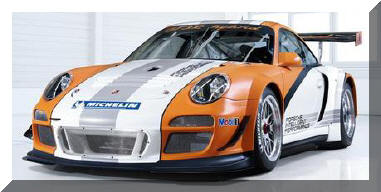
"The company's hybrid drive technology - developed for racing - uses an
electric front axle drive system with a pair of 60kW ( 80 HP )
electric motors adding a boost to the car's already stroppy (had to look
that up- "Noisily Aggressive") 353kW (474 HP) flat six engine.
Rather than weighty batteries - like those used in hybrid road cars like
the Toyota Prius - it uses an electrical flywheel generator.
The 40,000 rpm generator is charged whenever the brakes are applied, and
stores power as kinetic energy. This 120kW (161HP) of power can be
released for approximately six to eight seconds after each charge,
converting previously wasted energy into a valuable boost out of corners or
when passing. Porsche reckons the system will also save fuel, cutting down on fuel
weight and pit stops."
Let's See-161 extra HP for 6 seconds is all I need in my Vette!!
And when I take off it will be using previously wasted braking energy instead
of gasoline! This is better than Nitrous! |
|
Porsche Will Produce Fast Green Car
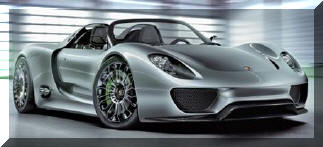 The
918 Spyder
plug-in hybrid
pairs a 3.6-liter 500-horsepower
V8 with three electric motors
(one on
each front wheel and one in the transmission. )
The electric
motors produce a peak 215 HP and are
powered by air-cooled lithium-ion
batteries.
That is a total of 715 hp and it incorporates
F1 type KERS overboost! The
918 Spyder
plug-in hybrid
pairs a 3.6-liter 500-horsepower
V8 with three electric motors
(one on
each front wheel and one in the transmission. )
The electric
motors produce a peak 215 HP and are
powered by air-cooled lithium-ion
batteries.
That is a total of 715 hp and it incorporates
F1 type KERS overboost!
The 918
Spyder is constructed from a carbon-fiber monocoque chassis and
engine cradle. Curb weight is 3,285 pounds.
Top speed is198 mph with a zero-to-60 time of 3.2
seconds. It can function in a thrift mode with only the electric motors
propelling the car. It has an EPA type
test
average 78 mpg! However like the Chevy Volt, it
is difficult to compare with all gasoline cars. Is the
Tesla infinite?!
The
price or volume have not been established but is expected to be very high
priced and produced in low numbers. Perfect for a very rich “early adopter! |
| I am confident there are
other even better ideas to consider like improving the engine efficiency.
Expect inventors, new engineers and entrepreneurs will tackle these opportunities! |
|
Want Some Ideas on How to Save 20% or More
Gasoline?
CLICK |
|
Use Ethanol to Reduce
Fossil Fuels? CLICK |
| . |
|
Have a Welder? You Can Save a Higher
Percentage of MIG Shielding Gas Than You Can Gasoline with Our
Patented Gas Saver System (GSS)!!
You'll Also Improve Weld Starts and
Have a Shielding Gas Cylinder Last at Least Twice as Long!
Note: Our Patented
GSS
is Not Available in "Stores"
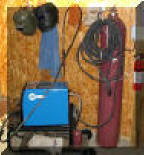
A home shop fabricator
in Georgia with a MillerTM 175 amp welder
purchased a 50 foot Gas Saver System ( GSSTM
) so he could use a larger cylinder
and mount it on the wall of his shop. He wrote:
"The system works great.
Thanks for the professional service and
a great product."
Click To See His Home Shop
A Professional
Street Rod Builder Had This to Say:
With their standard MIG welder gas delivery hose the
peak shielding flow at weld start was measured at 150 CFH. That caused air
to be sucked into the gas stream causing poor weld starts. With the GSS replacing their existing
hose, the peak flow surge at the weld start was about 50 CFH. Total gas use
was cut in half.
Kyle Bond, President, quickly saw the improvement
achieved in weld start quality as a significant advantage! Kyle, an
excellent automotive painter, was well aware of the effects of gas surge
caused by pressure buildup in the delivery hose when stopped. He has to
deal with the visible effects in the air hose lines on the spray gun in his
paint booth! The paint surge is visible and creates defects unless the gun
is triggered off the part being painted! We can’t do that with our MIG gun!
|
|
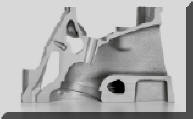
MIG Gas Delivery and the Small Block Chevy
Evolved in a Similar Way and Time!
Both had Advances and
Setbacks Before
They Were Optimized!
Click
for a PDF Report on the Similarities |
|
Want Some Ideas on How to Save 20% or More
Gasoline?
CLICK |
|
Use Ethanol to Reduce
Fossil Fuels CLICK |
|
Purchase Products |

Purchase Gas Saving Products |

Purchase Training Aids |

Purchase
Flow Rate Limiter |

Purchase Wire Feeding Aids |